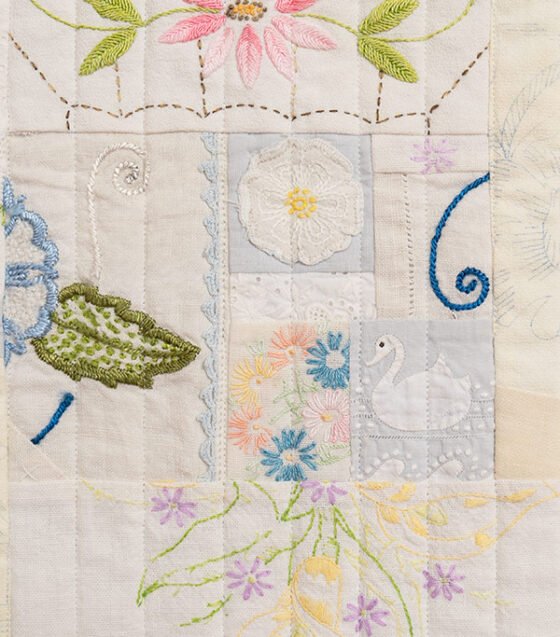
When Beth was 30 years old, her mother Rosemary died, and as she explained to me, she has been without a mother her entire adult life. That was over 25 years ago, and ever since then, Beth has preserved a bag of her mother’s clothing and fabrics. It had been years since she had taken them out of the bag up until the moment she lifted them out one by one onto my studio table.

As Beth took out two black waitress aprons, she explained that her mother had grown up in a small town in Massachusetts, had dropped out of high school, worked as a waitress her whole life, and at age 52 went back to school to get her GED.

Rosemary had also loved to go to the flea markets on Sundays and would often take Beth with her. She bought all sorts of embroidered textiles, some with lace or crocheted edging which Beth explained was a bit of a mystery since her mom was far from “frou-frou”.
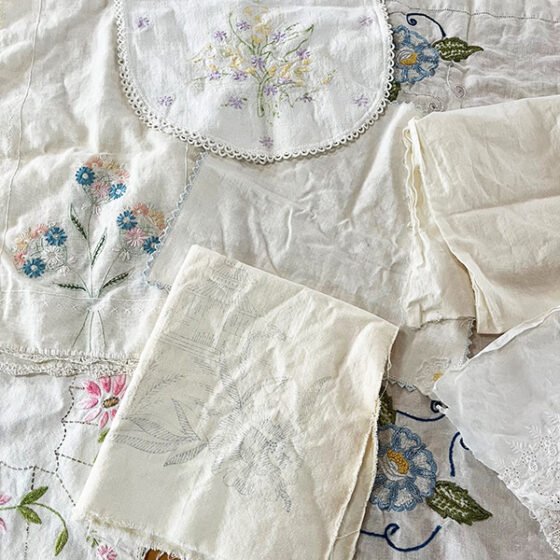

When Beth laid out a new, never worn, black velvet pencil line skirt with the tags still on it, it brought up a lot of emotion. “This was just like my mom,” explained Beth. “Buying a fancy outfit with no occasion to wear it.” According to Beth, her mom had a rawness about her – she didn’t have a shiny veneer, and her soft, loving, intelligent side was often hidden from others. She was a woman of dualities. One of the biggest lessons she imparted to Beth was not to judge people by their appearance.

There were actually two tags on the skirt, one from Saks Fifth Avenue, and one from Filene’s Basement, where Rosemary found it for a great deal.

The last piece Beth took out of the bag was a blue duvet cover that had kept Rosemary warm during her final days.

It was clear to me that Beth’s relationship with her mom was as complicated as Rosemary was herself. We both found it fitting that the fabrics Beth had kept mirrored aspects of her mom, the light and the dark. All of the embroidered flea market fabrics were varying shades of white or cream, but Rosemary’s aprons, velvet skirt, and a few other fabric remnants were all black. As a designer, there are always so many options when using black and white.
One design idea that Beth asked me to explore was to visually create a soft, sweet, colorful center, much like her mom carried within her own interior.
And so, in looking through the collection of embroidered fabrics, I came upon a sweet little crocheted flower that I immediately cut out for the quilt center.

I started to carefully select beautiful details from the remainder of the flea market textiles and built the quilt around the flower.
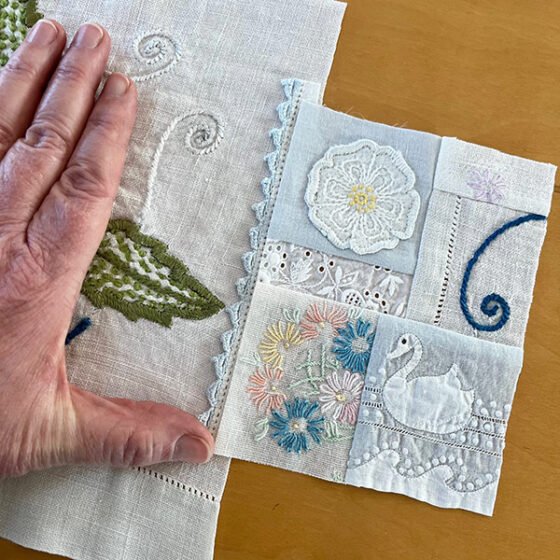
Beth had suggested I cut away most of the frilly edges because they didn’t really feel like her mom. I mostly did just that, but some details were too sweet not to include.

I kept most of the embroidered sections closer to the middle and then started filling in with larger sections of woven textures instead.


Beth was clear that the quilt piecing should not feel too “perfect”, so I worked more improvisationally then I normally do which was totally fun.

Because Rosemary had been a waitress, I looked to old placemat patterns as inspiration for the overall design. I knew the center was going to be shades of white, so I needed to solve the border designs next. Both the black velvet skirt and the black aprons held significant emotional importance, so I decided to make them into alternating polka dots to imbue them with levity and visual energy.
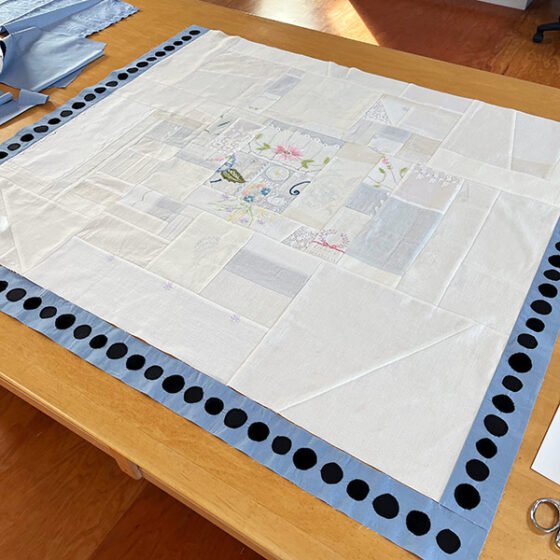
To avoid an all-black outside border, I used the blue duvet cover at the corners.

Beth requested a wall-hanging as opposed to a functional quilt, so it made sense to finish the edge with a hidden facing rather than a traditional binding.


Here is the final quilt. I chose custom quilting rather than edge-to-edge because the center area needed very simple quilting to not distract from all the details, but the solid outer border needed the opposite.

Here are some details.


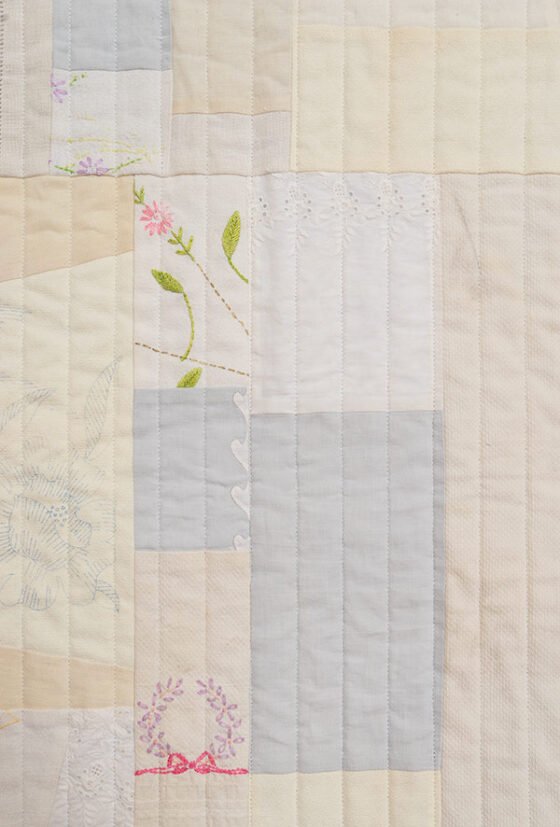
A heartfelt thank you to Beth for putting her trust in me to create this piece to honor Rosemary.
